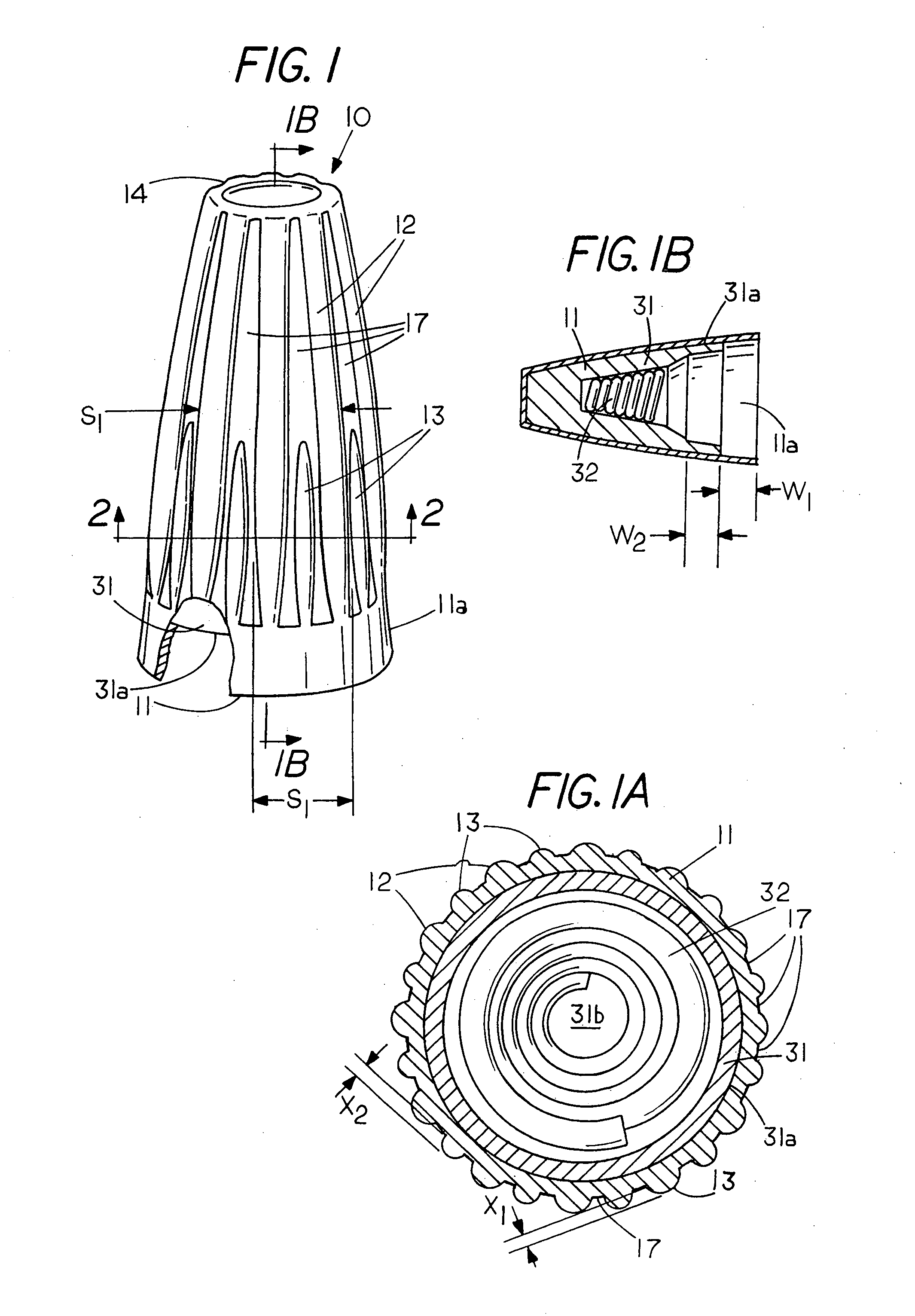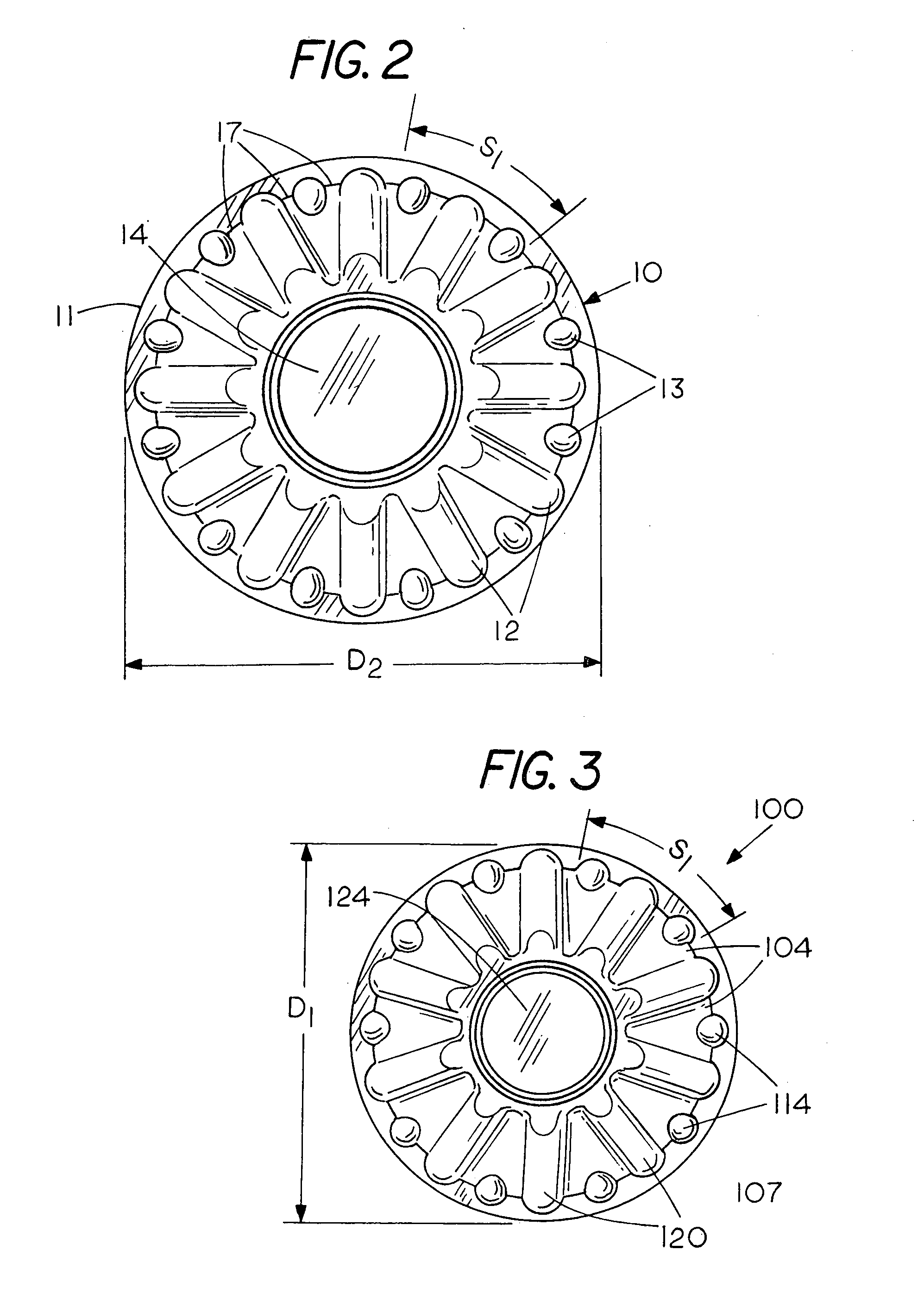Epidermal friendly twist-on wire connector method
a twist-on wire and connector technology, applied in the direction of connection formation by deformation, line/current collector details, electrical equipment, etc., can solve the problems of hard plastic surface pain on fingers, slippery shell surface, and little benefi
- Summary
- Abstract
- Description
- Claims
- Application Information
AI Technical Summary
Benefits of technology
Problems solved by technology
Method used
Image
Examples
Embodiment Construction
[0020]While it is known that pads, wings and rigid ribs have been placed on the exterior surface of twist-on wire connectors to provide a good grip the art is silent on epidermal trauma to the users fingers and thumb which is caused during applications of twist-on wire connectors. An aspect of the invention described herein is that the surface features of the twist-on wire connector not only enhance a users grip thereon but the surface features of the twist-on wire connector can also inhibit or prevent epidermal trauma on those portion of the users fingers and thumb that frictionally engage the twist-on wire connector by limiting the amount of finger and thumb pressure necessary to generate a wire securement torque on the twist-on wire connector. Epidermal trauma is a condition where the epidermis layer on the users finger and thumbs becomes irritated or ruptured by application of a wire securement torque to harsh external features on the twist-on wire connector and may appear as a ...
PUM
| Property | Measurement | Unit |
|---|---|---|
| area | aaaaa | aaaaa |
| resilient | aaaaa | aaaaa |
| torque | aaaaa | aaaaa |
Abstract
Description
Claims
Application Information
 Login to View More
Login to View More - R&D
- Intellectual Property
- Life Sciences
- Materials
- Tech Scout
- Unparalleled Data Quality
- Higher Quality Content
- 60% Fewer Hallucinations
Browse by: Latest US Patents, China's latest patents, Technical Efficacy Thesaurus, Application Domain, Technology Topic, Popular Technical Reports.
© 2025 PatSnap. All rights reserved.Legal|Privacy policy|Modern Slavery Act Transparency Statement|Sitemap|About US| Contact US: help@patsnap.com



